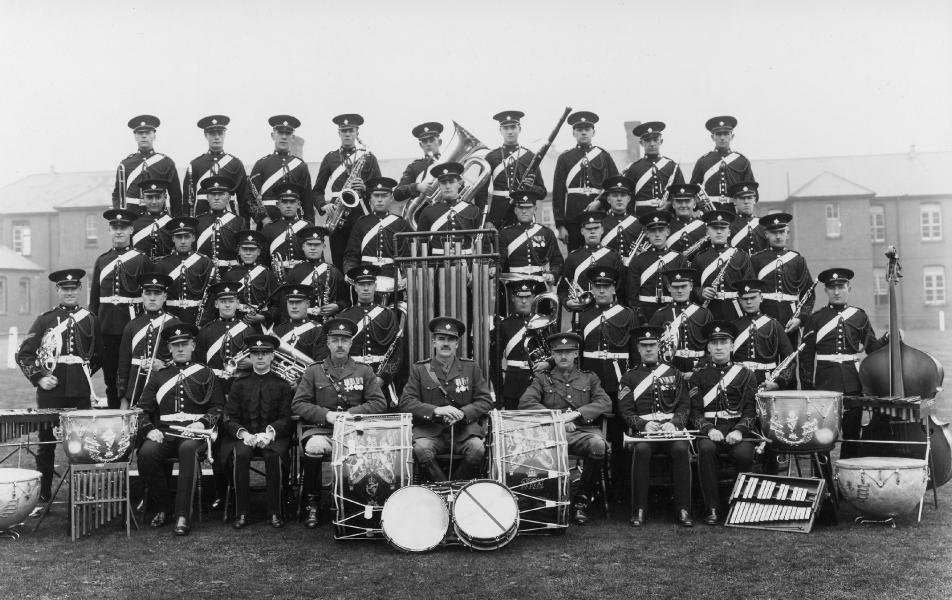


Since the beginnings of warfare as an organised activity, soldiers have marched informations. The benefits of formations, whether fighting at close quarters or at range, were too obvious to he ignored: ease of command and control, improved cohesion in battle, immense capacity for generating shock in the brutal cauldron of hand-to-hand combat. Among the best means of keeping soldiers in a coherent formation, probably discovered early in the history of formalised warfare, was the use of musical instruments. Drum-beats, in particular, sounded readily above the sound of a column of marching men. Smaller instruments, such as fifes, were both readily available and able to add a melody to the drums' steady rhythm. Bugles and trumpets, used primarily as a means of signalling on the battlefield, were also useful in adding depth and colour to the other instruments an army could easily carry on the march..jpg)
As armies began to change from simple levies, taken from the land whenever a war threatened, into bodies of full-time fighting men, so the need for more formal bands grew. The armies of Greece and Rome marched to the sounds of drums and fifes, helping them to remain co-ordinated and controlled on the battlefield. Although the level of organisation and discipline varied within armies across the following ages, the usefulness of music in co-ordinating a group of men was never forgotten.
By the early 20th Century, Regimental bands were, in the British Army, well-balanced, highly versatile groups of musicians. Although their battlefield role had faded somewhat - trumpet calls were still used to signal on the battlefield, but the kettledrums that once accompanied cavalrymen to battle now remained unused - the band were still called upon to perform at functions, mess events, and public displays, enhancing the image of the Regiments. In wartime, the Bandsmen would act as stretcher bearers, dispatch riders, and in other non-combatant roles.
 With the gradual reduction in size of the British Army, the need for individual Regimental bands was seen as less than the need for economy. Although the Corps of Army Music still exists, and its school at Kneller Hall in Twickenham is still fully operational, there are now just 22 regular and 19 irregular bands in the Army. The bands of the various Dragoon Guards regiments were amalgamated to form the Band of the Dragoon Guards. This, in 2006, joined with the Royal Tank Regiment Cambrai Band to form the present Heavy Cavalry and Cambrai Band. Along with the Light Cavalry Band, the Band of the Life Guards and The Band of The Blues and Royals, they represent the modern continuation of the proud tradition of Army music within the British cavalry.
With the gradual reduction in size of the British Army, the need for individual Regimental bands was seen as less than the need for economy. Although the Corps of Army Music still exists, and its school at Kneller Hall in Twickenham is still fully operational, there are now just 22 regular and 19 irregular bands in the Army. The bands of the various Dragoon Guards regiments were amalgamated to form the Band of the Dragoon Guards. This, in 2006, joined with the Royal Tank Regiment Cambrai Band to form the present Heavy Cavalry and Cambrai Band. Along with the Light Cavalry Band, the Band of the Life Guards and The Band of The Blues and Royals, they represent the modern continuation of the proud tradition of Army music within the British cavalry.
Click here to find out more about the Regiment's Quick March, or here to learn more about the Slow March.